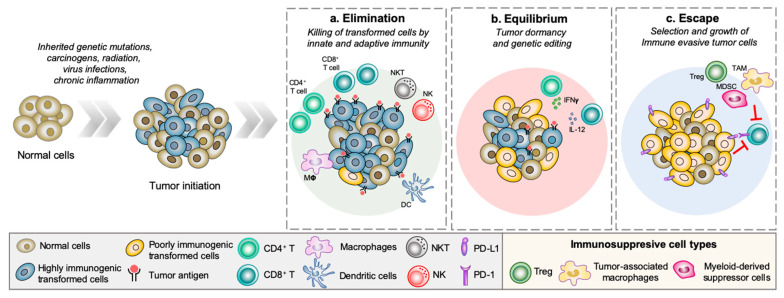Figure 1.
Cancer immunoediting concept–the dual host-protecting and tumor-sculpting actions of the immune system proposed by Dunn et al. [24]. Oncogenic stimuli cause normal cells to undergo transformation and become tumorigenic. Transformed cells are recognized and eradicated by the innate and adaptive immune systems during the elimination phase. In the equilibrium phase, surviving tumor cells continue to adapt to the constant anti-tumor immune pressure. The escape phase is largely associated with the outgrowth of immunoedited tumor cells capable of evading the immune systems through various means; loss of immunogenicity, loss of antigenicity, and/or orchestrating an immunosuppressive microenvironment (i.e., recruitment of immunosuppressive cell types such as regulatory T cells (Treg), tumor-associated macrophages (TAM), and myeloid-derived suppressor cells (MDSC)).

